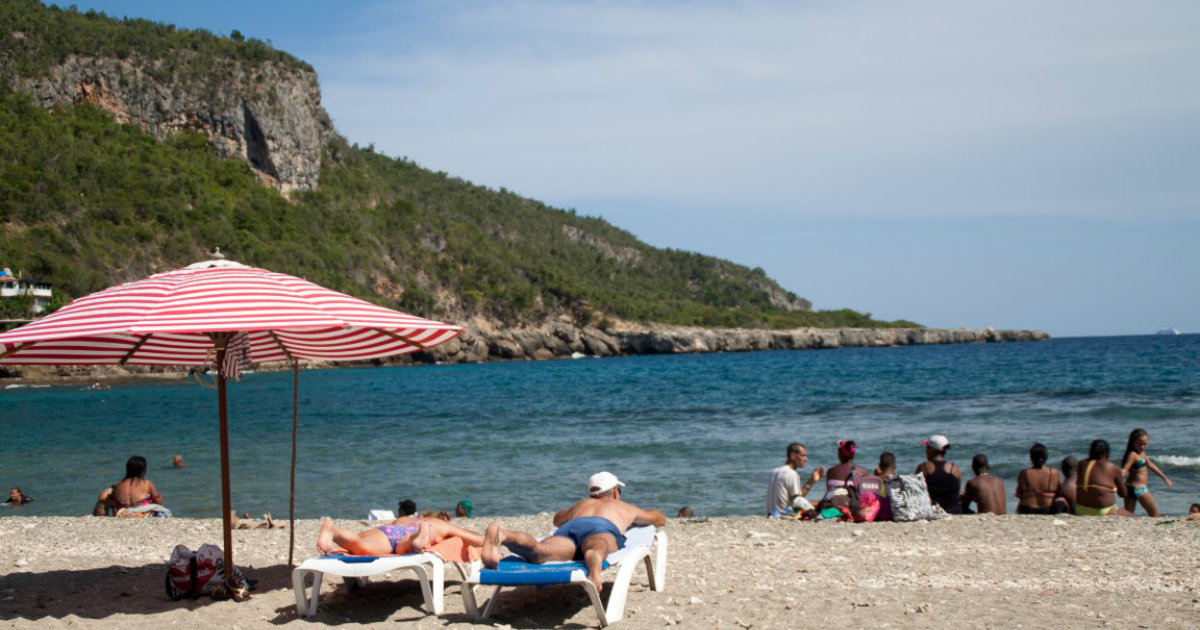The coastal areas of Guamá and Baconao in Santiago de Cuba are deemed high-risk zones for swimmers due to their natural and geographical conditions. Aris Arias Batalla, head of Provincial Operations and Water Safety, highlighted these dangers in a Facebook post, emphasizing the risks faced by those who venture into these seemingly calm waters.
These shores are subject to intense marine currents and unpredictable waves, particularly during hurricane season. Rip currents, which can swiftly pull swimmers out to sea, pose a grave threat to lives. Unlike more forgiving sandy beaches, the coastlines of Guamá and Baconao feature steep, rocky seabeds with sharp rocks and corals, increasing the likelihood of injuries while swimming.
In areas like Playa Cazonal in Baconao, the water may appear calm but conceals sudden depth changes that can catch even seasoned swimmers off guard. Santiago de Cuba is also prone to heavy rains and sudden river floods, which further affect coastal safety. Weather conditions can shift rapidly, bringing gusty winds and a sudden rise in wave activity, even on sunny days.
Arias also cautioned about the presence of jellyfish and, in deeper waters, sharks. Although shark attacks are rare, the risk remains and should be considered by visitors. He shared several recommendations, such as not swimming alone, avoiding going too far out to sea, heeding warning signs, and consulting locals about maritime conditions. He also stressed avoiding swimming during strong waves or after heavy rains.
Hidden Dangers Beneath the Surface
"These coastlines are beautiful, but their wild nature makes them risky if precautions aren't taken," warned the water safety chief. His message aims to raise awareness about the dangers lurking in natural tourist destinations, often underestimated due to their peaceful appearance.
Arias's warning came shortly after a drowning incident on Sunday at Juraguá beach in the province of Santiago de Cuba. Additionally, a tragic event recently struck the Boniato neighborhood in Santiago de Cuba, following the drowning of a teenager, Rosa María Espinosa Quesada, affectionately known as "Rosita" or "La Flaca," at the Chalons reservoir. This incident prompted Arias to publicly reiterate the hazards of swimming in unauthorized areas and to share key advice for preventing fatal accidents during the summer.
Frequently Asked Questions about Beach Safety in Santiago de Cuba
What makes the beaches of Guamá and Baconao high-risk for swimmers?
The beaches of Guamá and Baconao are considered high-risk due to their strong marine currents, irregular waves, steep rocky seabeds, and the presence of rip currents, which can quickly pull swimmers out to sea.
What should swimmers do to stay safe at these beaches?
Swimmers should avoid swimming alone, not venture too far out to sea, pay attention to warning signs, consult locals about conditions, and refrain from swimming during strong waves or after heavy rains.
Are shark attacks common in Santiago de Cuba's waters?
Shark attacks in Santiago de Cuba's waters are rare, but the presence of sharks in deeper areas means there is still a risk that visitors should be aware of.
